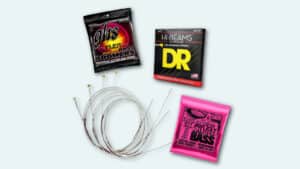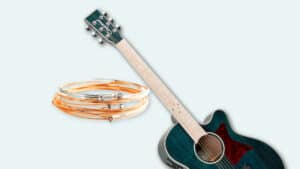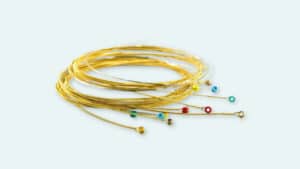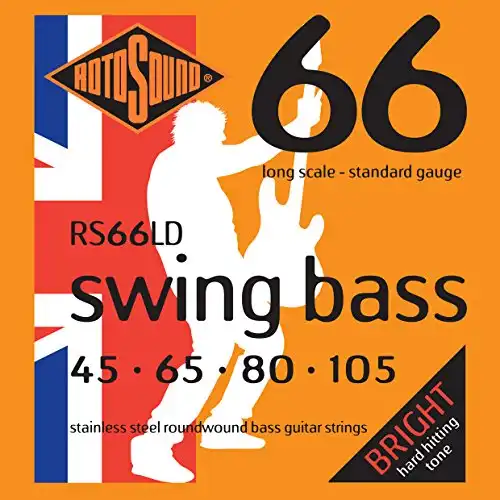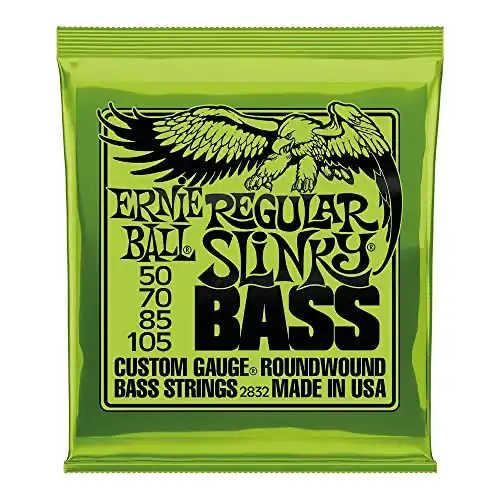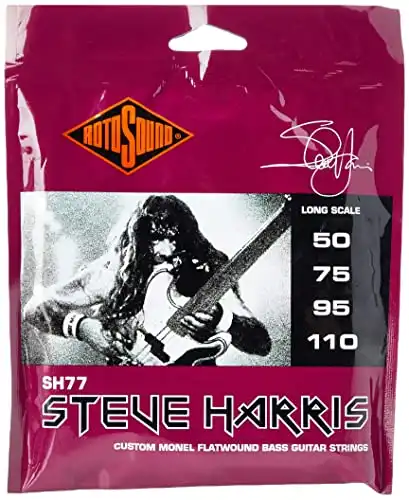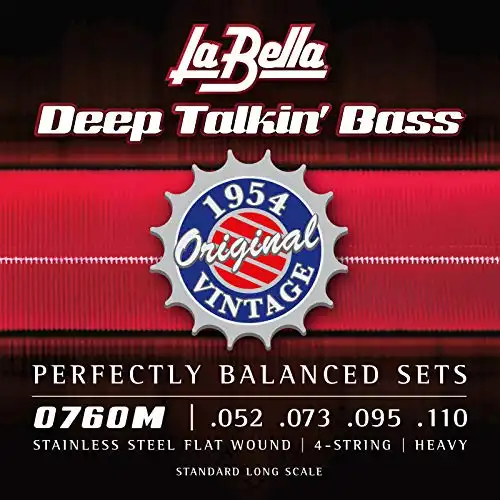What are the differences between flatwound and roundwound strings?
As the name hints, the core of a roundwound string is always covered with a round piece of wire with curved edges. So, most roundwound strings have a rough surface that’s quite bumpy. Flatwound string cores are wounded with a flat wire that doesn’t have any edges.
Are you planning to install new strings on your guitar but can’t tell the difference between roundwound and flatwound strings?
I was you at one point, too.
A guitar’s string winding can affect the sound and tonality of music tracks. Not to mention, some music genres sound more defined when they are played from a certain type of string—either by a roundwound or flatwound.
Roundwound strings come with a core that’s wounded with a round wire, while flatwood strings have a core that is covered with a flat wire.
Whether you’re planning to play rock, R&B, or metal on your guitar, I will give you an insight into the differences between round and flatwound strings so that you choose the best strings for your guitar.
Let’s dive right into it.
Flatwound vs Roundwound Strings
Sound Quality
Roundwound (Bright Tones)
Most roundwound strings will give you a bright tone, which is complemented by treble frequencies, creating a smooth balance between mids, highs, and lows.
Since round windings have curved edges, they can’t be wrapped around cores as tightly as compared to flat windings.
By exerting less tensional force on a string’s core, round windings always leave room for string movements, offering you a flexible string that’s capable of producing upper harmonics.
Thanks to the bright tones and upper harmonics, roundwound strings can make a mix sound more prevalent. If you’re planning to play metal, rock, or pop, roundwound strings might be a suitable option for you.
But, you don’t have to limit your options. You can use different types of strings to generate some great tones, as long as you adjust the amp settings correctly.
Unfortunately, every time I use roundwound wires to play some tracks, my guitar pick-ups fret noises and hand movements, especially when I’m sliding my fingers in-between ridges.
So, it’s worthwhile to note that roundwounds can pick up hand movements and fret noises more easily than flatwound strings. These noises originate from bumps and ridges that are formed by round windings.
When roundwounds are new, they always produce bright tones. But, as time passes by, the ridges may wear off, causing a drastic change in tonality. Most roundwound strings will generate a dull tone after aging or wearing off. The same thing also happens when dust and grime accumulates in-between ridges.
Flatwound (Dull and Mellow Tones)
In terms of tonality, a flatwound string generates a mellow and dull sound, reducing the intensity of upper harmonics to deliver lows and mids in a less aggressive manner.
Instead of cutting down the highs completely, a flatwound string scales down the highs to a perfect spot in between mids and highs, making it easier for you to cut through the mix. It also adds some thickness to a tone for a warmer sound.
Tones produced by flatwound strings are characterized by intensified mids and lows, known as boosted mid-lows.
Unlike round windings, flat winding wires are always wrapped tightly around string cores due to their flat shape. Extra tight windings can exert a lot of tensional force on a string, minimizing string movements and flexibility to give you a rigid string
Due to this rigidity, flatwound strings don’t produce sounds with a bright tone.
On the bright side, flatwound strings are quite effective in producing a clean tone, which is free of fret noises and hand movement noises. Well, flatwound strings have a smooth surface, so you can easily run your fingers on the string without hearing squeals and noises.
Also, the sound quality of these strings can be easily preserved. Featuring a smooth and flat surface, flatwound strings are not affected by dirt particles.
From a music genre perspective, I’d advise you to use flats while playing jazz, R&B, reggae, or any other track that has a vintage-type tone. Sounds characterized by intensified lows can be easily played on a guitar with flats.
Price
Roundwound Price (Affordable)
Featured in many guitars as the standard string, most roundwound strings have an affordable price tag.
The average price of roundwound strings ranges from $10 – $20 depending on the brand, quality, and material.
And as a guitarist who switches from one brand to the next, I usually spend about $15-$25 on high-quality roundwound strings.
For instance, the Rotosound RS66LD strings, which are manufactured from stainless steel, have a price tag that’s just above $20, and that’s pretty reasonable based on their quality.
Ernie Ball P02832 is another example of high-quality roundwound strings, with a price tag below $20 and above $15.
Flatwound Price (Expensive)
Flatwound strings are more costly than roundwounds because they can last for a long period without sounding different. On top of that, fabricating and manufacturing flatwound strings can be tiring and time-consuming. A lot of craftsmanship and precision goes into fabricating these strings.
To get high-quality flatwound strings, you’ll need to spend $30-$50. Obviously, the price tag varies, based on the quality and materials used.
While purchasing flatwound strings might be expensive at first, these strings are quite economical in the long run. You don’t need to replace flatwound strings frequently.
Differences in Installing Flat vs Roundwound
Whether you are planning to install a roundwound or flatwound string on your guitar, you’ll follow the same procedure while installing either of the two.
However, the steps may vary from one guitar to the next due to design changes.
Procedure
Follow these steps to install new strings on your guitar:
- Remove the worn-out strings from your guitar: Start off by tuning down your guitar to loosen the tension on the strings and neck. Loosening the tension makes it easier for you to cut strings. Next, cut the old strings and detach them from your guitar.
- Unpack/unbox the new strings: Before you unpack the guitar strings, read the manufacturer’s instructions to get an insight into the string color codes. Afterward, unbox the strings from the wrapped package. Don’t tear the section with the instructions. Next, use the color code to find the first string.
- Flip the guitar to the side and thread the first string: Flipping the guitar to the side makes it easier for you to thread strings through bridge entries. Thread the first string through a bridge entry. Pull it upwards slowly and position it on the bridge saddle.
- Fasten the string to the machine head: Align the bass string to the machine head, and mark the section that you are planning to cut by measuring an extra 3’’ from the machine head. Clip off the extra length with a pair of wire cutters.
Position the string along the center of the corresponding machine head, and wind it around the machine head in a clockwise motion.
- Feed the string to the peg: Hold the string tightly with your thumb, and exert some light pressure on it to create some tension. Afterward, turn the tuning peg a few times. You don’t have to tune the string after installing it.
Repeat the same procedure to install other strings.
What Famous Guitarists Used Flatwound Strings?
Steve Harris
Popular due to his unique style of playing bass guitars to produce superb metal tones, Steve Harris is one of the classic metal guitarists who’s been using flatwound strings since the ‘70s.
As a guitarist who loves unique tones, Steve always customizes his bass guitar to suit his style, and this involves installing flatwound wires on custom guitars.
Steve Harris plays metal tracks using Rotosound Monel flatwound strings. He’s perfected the art of cutting through a metal mix, with a clean and bright tone.
Metal songs from the ‘70s will always sound good on flatwound strings. Remember to switch to flatwound wires while playing classic metal songs from the ‘70s and ‘80s.
Since the Rotosound Monel flatwound strings were specifically customized for Steve Harris, they are now his signature strings.
While the core is manufactured from steel, the windings are constructed from stainless steel and nickel.
And due to his unique playing style, Steve Harris has encouraged so many guitarists to try out his signature flatwound strings, the Rotosound SH77 Steve Harris strings.
Pinot Paladino
With about four decades of musical experience under his belt, Pinot Paladino is quite versatile with a wide array of music genres, from jazz to R&B and electric bass.
There’s always been a debate about the number of flatwound wires that he’s used since he started playing guitars.
What I can say for sure is that Pinot Paladino has been switching from one brand to another, just like other guitarists who transition from one brand to the next.
Throughout his musical career, Pinot Paladino used multiple flatwound strings such as the La Bella 1954 Originals, EB Cobalts, and Thomastik-Infeld.
By using his creativity to play the 1963 P-bass, Pinot Paladino produced a unique tone that sounds like R&B and vintage soul. His most iconic tone is quite prevalent in the Black Messiah album.
Paul McCartney
Unlike other guitarists who used one type of string, Paul McCartney explored his options by trying out different types of strings such as tapewounds and flatwounds.
In the early ’60s, McCartney was more inclined towards the Hofner H1133 flatwound strings. But, he switched to tapewound strings in the mid-’60s.
While Paul was using tapewound strings in the mid-’60s, he created a perfect balance between flatwound and roundwound wires by alternating between the two.
As the Beatles were working on the Abbey Road album, Paul McCartney used a Rickenbacker bass guitar with Rotosound Tru Bass nylon tapewounds. He also used the same strings in some of the music performances that were held in 1969.
Get Some Suitable Strings for Your Guitar
While roundwound strings are quite effective in producing bright tones, flatwound strings can generate boosted mid-lows, adding some warmth to music tracks.
So, if you love playing metal, rock, or pop, you should consider installing roundwound strings on your guitar. On the other hand, flatwound strings might be a suitable option for vintage tones, R&B, and some jazz tunes.
Happy playing.
FAQs
Are flatwounds more durable than roundwound strings?
Since flatwounds have a flat surface, they don’t wear off as easily as roundwound strings. Not to mention, flatwound strings always produce the same tone. On the contrary, the sound quality of roundwound wires may degrade with time.
Which type of music can you play with flatwounds?
With flatwound wires, you can easily play jazz, R&B, and classic metal songs. These wires can generate a warm tone, characterized by intensified mids and lows.


